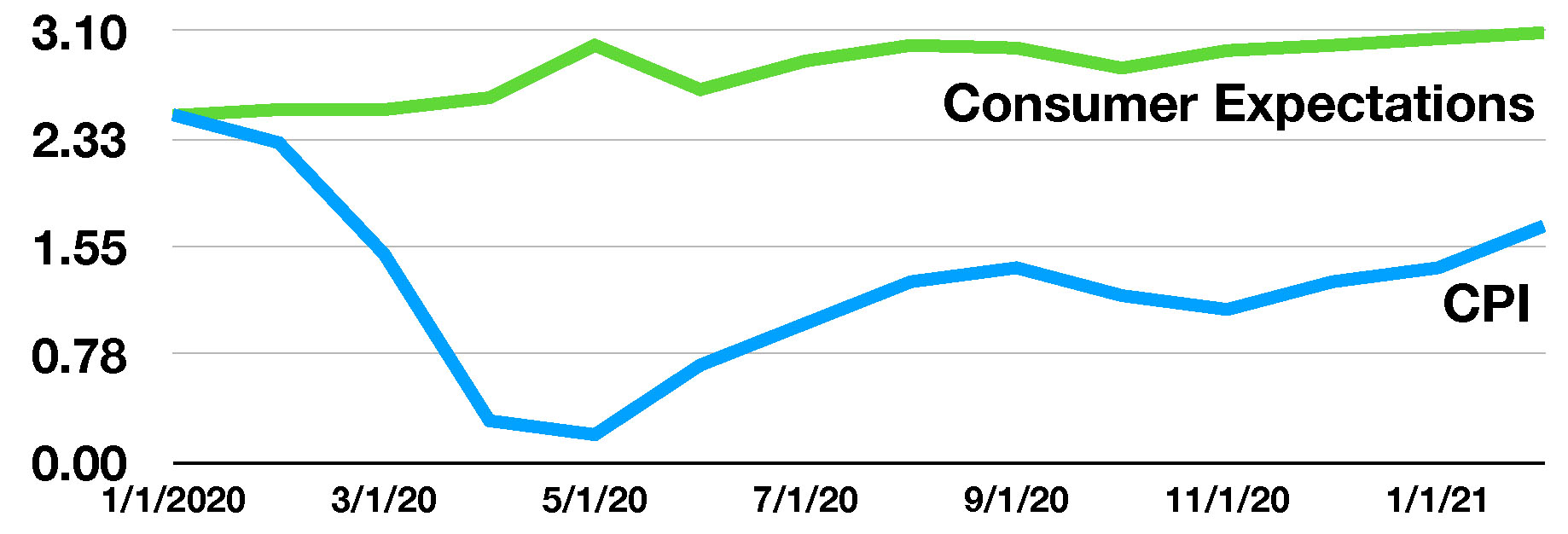Stock Indices:
| Dow Jones | 40,669 |
| S&P 500 | 5,569 |
| Nasdaq | 17,446 |
Bond Sector Yields:
| 2 Yr Treasury | 3.60% |
| 10 Yr Treasury | 4.17% |
| 10 Yr Municipal | 3.36% |
| High Yield | 7.69% |
YTD Market Returns:
| Dow Jones | -4.41% |
| S&P 500 | -5.31% |
| Nasdaq | -9.65% |
| MSCI-EAFE | 12.00% |
| MSCI-Europe | 15.70% |
| MSCI-Pacific | 5.80% |
| MSCI-Emg Mkt | 4.40% |
| US Agg Bond | 3.18% |
| US Corp Bond | 2.27% |
| US Gov’t Bond | 3.13% |
Commodity Prices:
| Gold | 3,298 |
| Silver | 32.78 |
| Oil (WTI) | 58.22 |
Currencies:
| Dollar / Euro | 1.13 |
| Dollar / Pound | 1.34 |
| Yen / Dollar | 142.35 |
| Canadian /Dollar | 0.72 |
A Reflection on the Past Year
March 23rd marked the one-year anniversary of the stock markets pandemic low. That day, the S&P 500 broke below 2,200 erasing nearly three years of gains in 23 trading days. Between March 9th and March 16th, the market had dropped almost 20% including two days where it actually experienced gains of 5% and 9%. It was one of the most volatile market stretches in history and it only took four months for things to get back to even.
I spent numerous hours last March talking to people about what the implications of the pandemic could have on their goals, financial plans and investment portfolios. There was absolutely no way to avoid the markets collapse last year, other than of course not owning stocks to begin with. The only ammunition I had for these conversations were longstanding fundamentals of how the stock market has historically functioned:
- Stocks have normally experienced a 15% decline once per year. One out of every five years that decline approaches 30%. Even more significant drops have occurred something like once a decade.
- Despite these declines, stocks have gone up around 10% per year for the last 100 years.
- 75% of the time the stock market has been positive over one-year periods.
- 94% of the time the stock market has been positive over ten-year periods.
- There hasn’t yet been a 20-year period where the stock market was negative.
- The only way to capture the full return of stocks is to hold them through their temporary declines.
In particularly chaotic years such as 2020, it is helpful to take a step back, tune out the political, market and economic events are taking place and ask ourselves the important questions—What am I investing for and am I still on track to meet my goal? For many families this means amassing enough money to comfortably retire and maintain their lifestyle for 30+ years. For others, it is creating a significant legacy for their heirs or charitable endeavors. Regardless of what the goal is, the answer to “am I on track” will never found on CNBC or Wall Street Journal headlines. These goals aren’t determined by whether the market’s next move is 30% up or down and they aren’t reached by outperforming your neighbors portfolio or a given benchmark. Investment portfolios are simply a function of a families personalized financial and estate plans aligned with their goals.
Investment “failure” is never a product of the stock market itself, after all, how could something that has annualized nearly 10% every year for the last 100 years realize a loss? Investment losses can only happen in one of three ways:
- Lack of financial planning
- Lack of portfolio diversification
- Panicking out of a portfolio in the midst of chaos
All three of these fatal investment flaws are a function of the investor (or their financial advisor) rather than a function of the stock market. Eliminating these three fatal flaws has made it historically impossible to realize a permanent loss of capital in a diversified investment portfolio.
